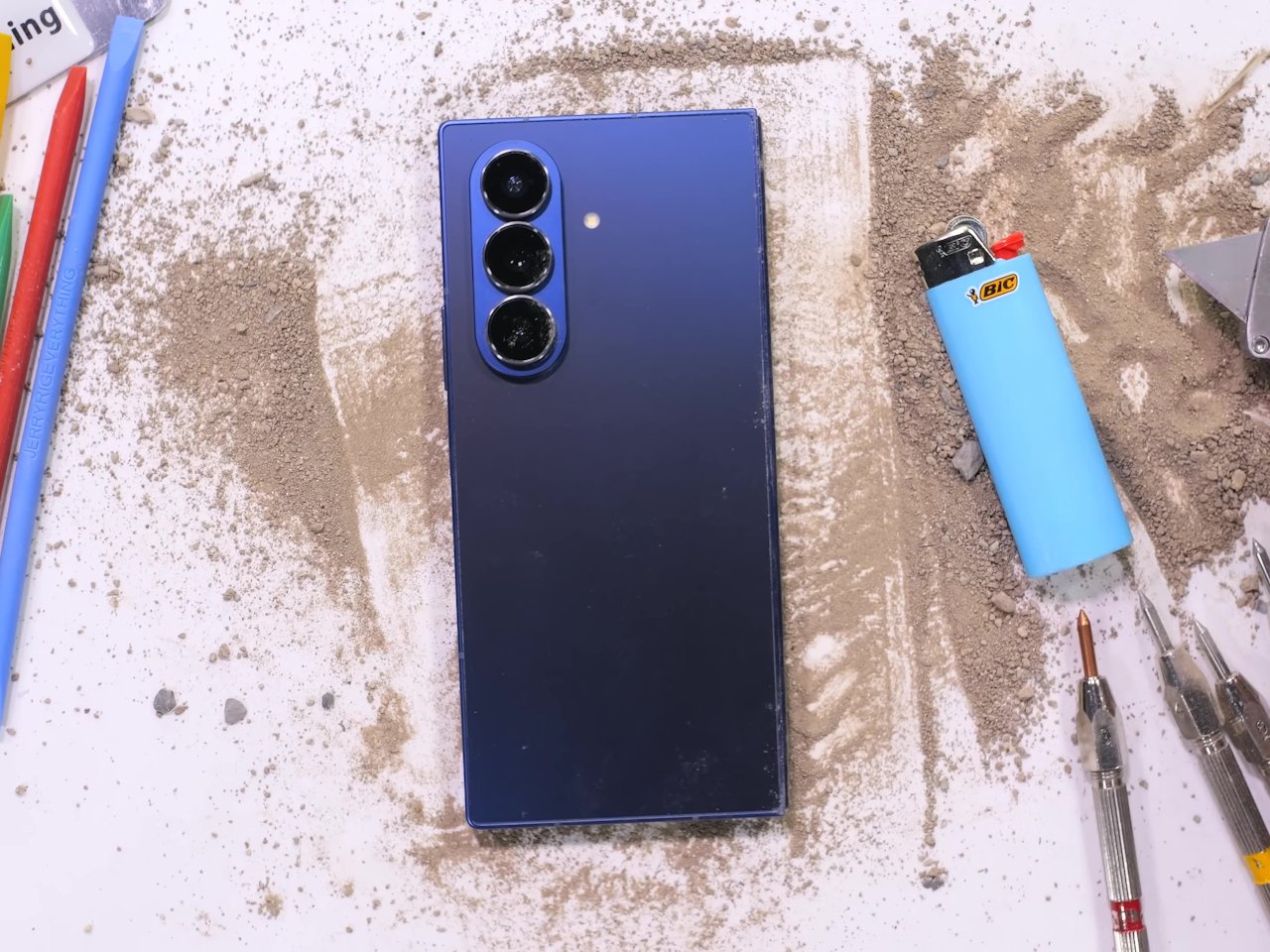Foldable phones have come incredibly far from the fragile prototypes we saw just a few years ago. They’re thinner, more refined, and increasingly mainstream, but questions about durability still linger in the back of everyone’s mind. Samsung’s Galaxy Z Fold 7 represents the company’s boldest attempt yet to prove that foldables can handle real life without constant babying.
JerryRigEverything’s latest torture test puts those concerns to rest in some surprising ways. The Z Fold 7 features a completely redesigned hinge mechanism that’s both slimmer and stronger than previous generations. Samsung upgraded to Gorilla Glass Victus 2 for better scratch resistance and improved the dust sealing throughout the device. The big question remains whether all these refinements actually translate to a phone you can use without worry.
Designer: Samsung (via Zack Nelson/JerryRigEverything)
Zack Nelson’s durability examination reveals some genuinely impressive improvements over earlier Z Fold models. The hinge withstands repeated stress and reverse bending without showing signs of failure or loosening. The exterior glass holds up well to scratch tests, and the camera module’s new protective design prevents the lens damage that plagued earlier foldables during drops.
However, the inner foldable display still represents the device’s biggest vulnerability. Even with Samsung’s pre-installed screen protector, the ultra-thin plastic surface scratches easily from fingernails and everyday objects. This isn’t necessarily a dealbreaker, but it does require users to develop different habits around how they interact with their phone’s main screen.
The bend test provides the most reassuring results for anyone worried about the Z Fold 7’s super-thin profile. Despite being Samsung’s thinnest foldable yet, the phone shows remarkable structural integrity when subjected to extreme reverse bending forces. The frame doesn’t creak or flex dangerously, and the hinge mechanism maintains its alignment throughout the torture. This suggests the device can handle the kind of pocket pressure and accidental stress that would destroy earlier foldables.
One unexpected issue the video highlights is the significant wobbling when the closed phone sits on flat surfaces. The camera bump and overall design create an uneven base that makes typing or photography frustrating when the device is lying on a desk. It’s a minor annoyance that affects daily usability more than you might expect, especially for people who frequently use their phones on tables.
Living with a foldable still requires some mental adjustment, even with the Z Fold 7’s improvements. The knowledge that your inner screen can be permanently damaged by a fingernail creates a different relationship with your device than traditional smartphones. However, the enhanced hinge durability and better exterior protection mean you can be more confident about the phone’s overall longevity and structural soundness.
Key Takeaways:
Hinge mechanism shows significant durability improvements over previous generations
Exterior build quality rivals traditional flagship smartphones
Inner foldable display remains the primary vulnerability point
Wobbling when closed affects desktop usability
Bend test reveals solid structural integrity under extreme stress
JerryRigEverything’s test ultimately shows that Samsung has made meaningful strides in foldable durability without sacrificing the sleek, ultra-thin design that makes the Z Fold 7 so appealing. While foldables still demand more careful handling than traditional phones, the structural improvements mean you can actually trust this device to survive daily life. For design-conscious users who’ve been waiting for a foldable that balances innovation with reliability, the Z Fold 7 finally delivers on that promise.
The post Galaxy Z Fold7 Durability Test Proves Slim Design Doesn’t Sacrifice Strength first appeared on Yanko Design.

